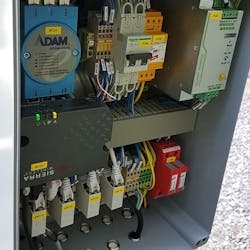AMI System Provides Near-Real-Time Information With Simple Setup
Advanced metering infrastructure (AMI) systems benefit utilities by providing near-real-time meter data with the convenience of remote reading. Kamstrup AMI consists of only a few components to install and maintain. Understanding the individual components of your AMI hardware ensures a high level of confidence when selecting the right system for your utility today and for years to come.
The Kamstrup AMI system aims for simplicity and practicality; two components make up the system: the data collector and the flowIQ meter.
A data collector consists of one or two antennas, a top box and a base station (or box). Antennas are installed as high as possible to pick up the radio signals from as many meters as possible. The Kamstrup AMI system operates on dedicated frequencies between 450 and 470 MHz; this is comparable to having a communication highway to yourself.
The top box connects to the antennas via coaxial cables; it functions as a converter, which sends the radio signal digitally from antennas to the base station. The closer the top box and antennas are to each other, the better, as reducing the length of the cable minimizes signal losses due to electrical noise.
The base station contains an internet modem that allows the customer to use either a wired internet connection (i.e. local area network) or the built-in 4G/CDMA connection. The base station is placed at ground level, making it easy to change internet connection options (such as SIM cards) or service the data collector without having to access high elevations or unsafe areas.
These components are collectively known as “the data collector.” After the data collector is connected to power and internet, it is automatically self-configured to your utility’s licensed frequency and connects to the master data management/head-end system.
